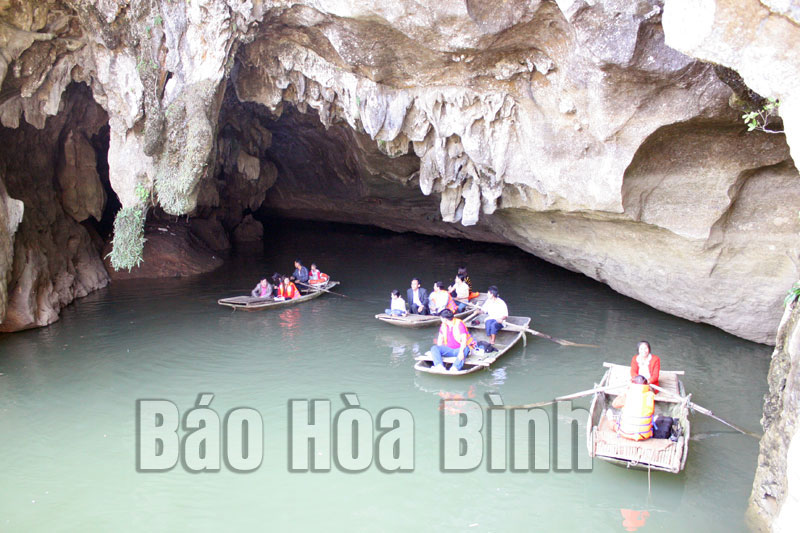(HBO) – Hidden inside Dam Khanh Mountain on the banks of the Boi River, Luon Cave (also called Trinh Nu (Virgin) Cave) is located in Dong Tam and Yen Bong communes and Chi Ne township of Lac Thuy district. It was recognised as a national landscape site in 2001.
Sitting on
small boats, tourists can explore and enjoy the beauty of Luon Cave in Lac Thuy
district.
Local residents said that the cave was named "Luon” (passing through) since it
passes through the mountain and has two entrances on the two mountain sides.
Discovered a long time ago, the place was explored by Italian cavers and
described as a beautiful cave in Hoa Binh province. It lies on the riverside,
where the landscape is adorned by the imposing Dam Khanh Mountain and the green
Boi River that looks like a strip of silk snaking around the mountain.
This cave, over 1.1km in length, 8 - 12m in width and 3 - 10m in height, is
accessible through one route by waterway and two others by road.
Coming here, visitors will be first impressed by a curtain of grey stalactites
from the roof of the entrances. The flower-dotted foliage of creeping plants
hanging down from cave walls is like both welcoming visitors and concealing the
mysteries inside.
After entering the cave and moving under layers of stalactites near the
entrances, visitors can follow the winding flow of water that is as narrow as a
stream in some stretches but as wide as a river in others. At around the middle
of the cave, it’s like a forest of orchids already there to greet visitors as
the plant can be found on cave walls, from the roof, and on stalagmites.
Inside Luon Cave, the air is cool while water from stalactites at some places
drips like a spring drizzle but at others, falls down like a summer shower,
forming an endless symphony.
Also near the middle of the cave, the space seems to intentionally widen to
create a beautiful beach surrounded by big stalactites that act as trees
spreading their shade. The deeper tourists go inside, the more stalactites in
various shapes appear, creating a vivid picture that inspires people’s
eagerness to explore the cave further.
To enjoy all the landscapes of Luon Cave, visitors will have to spend about 4
hours or even more if they want to try its pure and cool water.
Nguyen Thi Thanh Tam, head of the culture and information division of Lac Thuy
district, said that this site is part of the tour of Huong Pagoda, Luon Cave,
and Phu Lao Cave. It is a natural cave with a special location and entrances
linked with the river. Thanks to conservation efforts, its stalactites and
landscapes inside remain intact.
In recent years, with the strong development of sightseeing and cultural
tourism, Luon Cave has become one of the magnets for tourists from far and wide
to Lac Thuy district, she noted.



